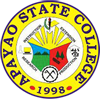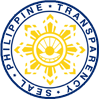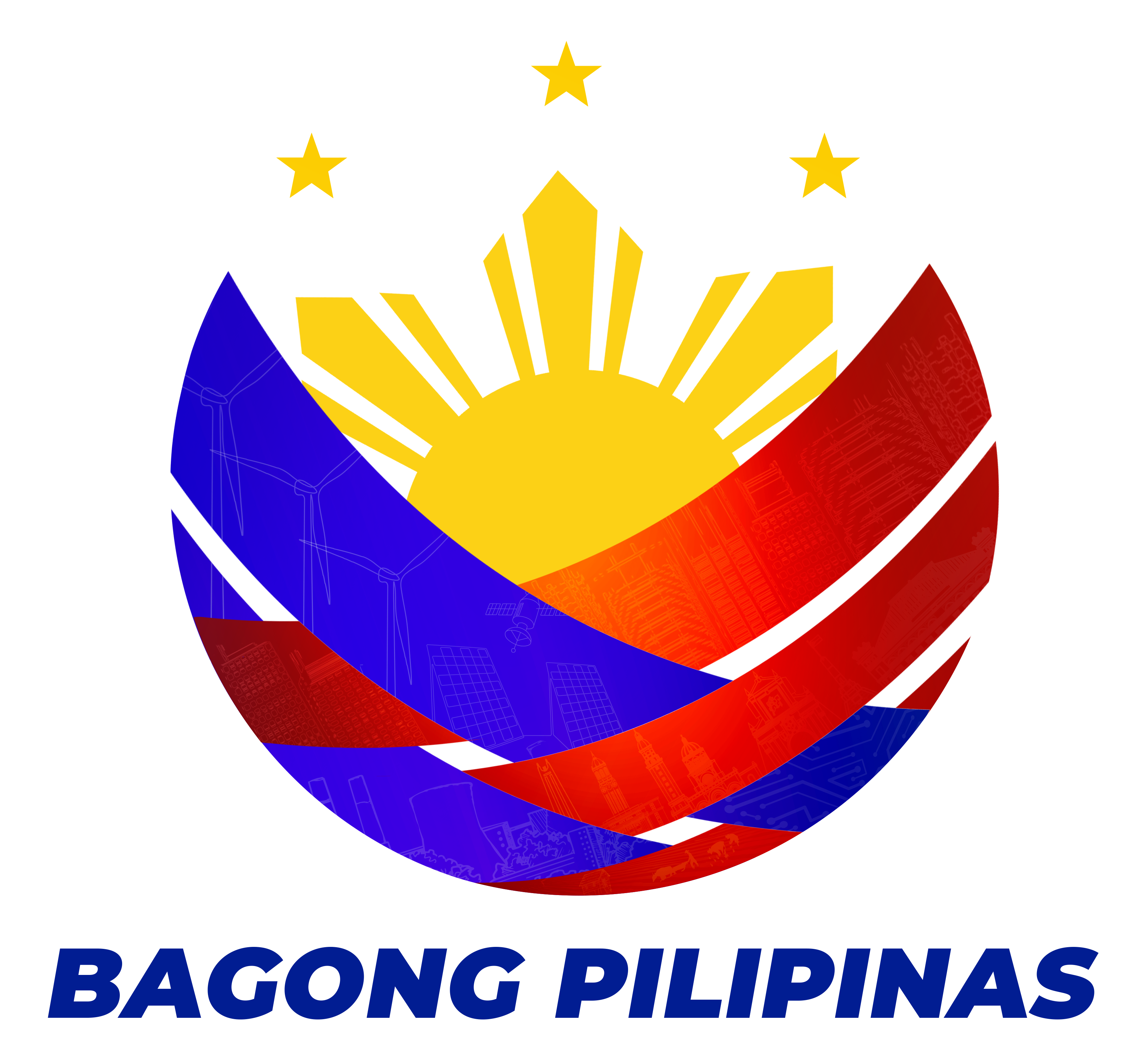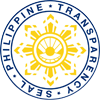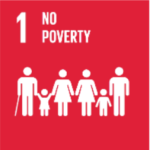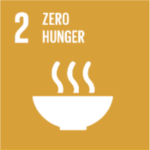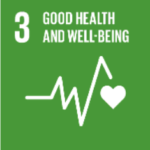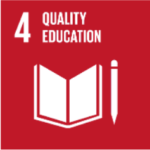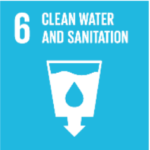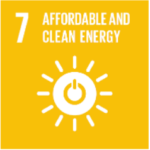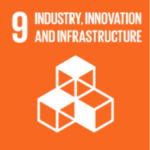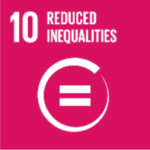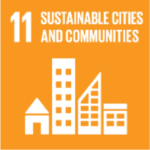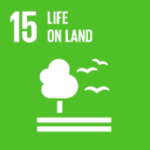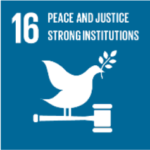SDG 13 - CLIMATE ACTION
Agriculture, Aquatic, and Natural Resources (AANR) Research Category
David A. Rodolfo, Hannie T. Martin, Maria Christina Z. Manicad, Rodel A. Tapuro, Olivia C. Tomas
ABSTRACT
This paper presents the result of the study conducted purposely to document the existing shifting cultivation practices among upland dwellers of Lower Apayao.To design appropriate or relevant ways of helping farmers, it is essential to understand the conditions under which farmers are operating. With the topography and agro-ecological setting of Apayao province, shifting cultivation is being practiced. From lower region to include the municipalities of Luna, Pudtol, and Flora to upper region which consist of Conner, Kabugao and Calanasan, “kaingin” making is definitely the way of life of the upland dwellers although some municipalities prohibits the same in some extent. Farming system which include production to marketing studies is very useful tool in designing extension program, project and activities by concern departments.While there are issues and concerns already identified by many authors, comprehensively to understand local situations especially in the case of Apayao is limited. In designing the study, it assumed that forest dwellers practice kaingin making, practices that are at some level sustained thier needed requirements for living. Data were collected through interview with the shifting cultivators for socio-demographic profiling. Actual field observation and documentation was undertaken to determine the definite cycle of kaingin making, observing problems encountered and at their farm productivity.
Generally, the findings revealed that Iyapayao shifting cultivators produce only for family consumptions. Limited resource inputs for farm productivity is observed. Problems due to the effect of climate change is also evident. Low farm productivity as percieved and observed need to be addressed.
Mirasol L. Agpuldo, Lorna Q. Caraang, Geronimo Digma, Quennie A. Berbano, Menardo D. Villanueva, Rodel A. Tapuro, David V. Valenzuela and Noreen Joy O. Padeway
ABSTRACT
The project was implemented by Apayao State College (ASC) from September 1, 2017 to June 30, 2020 under Science and Technology Action Frontline for Emergencies and Hazards (SAFE) program of Cordillera Administrative Region (CAR) to capacitate local farmers on disaster risk reduction and climate change adaptation and mitigation through S&T interventions at the farm level and communities in the province of Apayao. The farmer partners were members of Luna Apayao Organic Practitioners Association (LAOPA) and Wo”men” Organic Farmer Association of Pudtol (WOFAP). Results showed that majority (29.23%) of the respondents were at age bracket 61 above; 69.23% were male; and were married (92.31%). Also, the trainings that were identified during the assessment were conducted to capacitate the farmers and to increase their knowledge on disaster risk reduction and climate change adaptation and mitigation. Farm visits to different accredited farms were also done for farmers exposure on different environment on culture and production systems of the different agricultural products. The problems usually encountered were bad seeds, expensive fertilizers, soil acidity, decreasing crop yields, occurrence of soil borne diseases and effect of natural calamities.
Keywords: Climate change mitigation, SAFE, farm production, Apayao
Rodel A. Tapuro, Hannie T. Martin, Maria Christina Z. Manicad and David A. Rodolfo
ABSTRACT
This study determined the soil chemical properties and assessed the carbon stock and carbon sequestration of the Gmelina plantation of laboratory area of Forestry Department of Apayao State College in Payanan, San Gregorio, Luna, Apayao. Soil samples were collected from the plantation and subjected to laboratory analysis. The allometric equation used was from Laguiwoy (2010) and Lasco and Pulhin (2003) for the carbon stock and carbon sequestration. The Gmelina plantation was generally categorized as productive based on the result of its soil pH and organic matter content. The Gmelina plantation has a total carbon sequestration capacity of 3,195.54 kg.
Keywords: Carbon sequestration, Gmelina, Apayao State College
Apayao State College (ASC), as a Higher Education Institution in the country, is committed to contributing to the attainment of SDG 13: Climate Action. The P/A/Ps under this SDG include the following:
| P/A/P | Main Objective | Climate Change Objective | Climate Risks Being Addressed |
| I. Research and Extension | |||
| a. Research Program | |||
| 1. Design and Prototype Fabrication of Glass Bottles Crushing Machine | Design and develop a glass crushing machine that pulverize waste glass bottles to turn it into glass sand; encourage the public to recycle used up glass bottles; and provide alternative and systematic solid waste management by recycling through crushing machine. | To eliminate release of carbon dioxide when glass is recycled. Also, recycling glass reduces the space in landfills | Climate risk: air pollution |
| 2. Prototype Construction of Portable Cooking Apparatus | Construct a prototype of used cooking, engine oil kalan; and conduct performance evaluation of the constructed used cooking oil and engine used oil kalan. | To have a prototype kalan for energy as an essential strategy for mitigating climate change and improving health. | Climate risk: air pollution |
| 3. Profitable Innovation Growing Technology (PIG- Tech) on Cereal Production | Evaluate the potential of locally- made (Wil Grow) inorganic fertilizer as an alternative to imported fertilizer for cereals; and determine the effect of locally- made inorganic fertilizer compare to imported inorganic fertilizer in terms of growth and yield of rice, corn, and sorghum, and its economical impact to farming expenses. | To promote the locally made inorganic fertilizer (Wil Grow) for growth and yield of agricultural crops in order to become more resistant to extreme weather events. | Will grow fertilizer is made from natural ingredients, and it is completely safe for both humans and the environment. |
| 4. Profitable Innovation Growing Technology (PIG- Tech) on High Value Crops | Evaluate the potential of Provege Plus Bio- Organic Fertilizer to high value crops testing to different vegetable families; and determine the effect of Provege Plus Bio-Organic as fertilizer substitute to synthetic fertilizer in terms of growth and yield of different vegetables species and its economically impact to farming expenses. | To promote bio- organic fertilizer for growth and yield of high value vegetable crops in order to become more resistant to extreme weather events | Bio-organic fertilizer reduces emissions of greenhouse gases |
| 5. Research Innovation for Sustainability and Environment (Rise): A Profitable Innovative Growing Technology for Poultry Production | Evaluate the effectiveness of spent mushroom substrates (SMS) as alternative supplemental feed ingredient for the growth and laying performance of Itik Pinas under Conner Apayao Condition | Develop livestock production technology for food security as climate change agricultural practices | This project addresses the decrease of livestock production due to impacts related to climate change such as severe storm, droughts and flood. |
| 6. Research Innovation for Community and Environment (RICE): A Profitable Innovation Growing Technology for Poultry Production | Evaluate the effectiveness of Profitable Innovation Growing Technology in Poultry Chicken under the Research Innovation for Community and Environment (RICE) Program; and determine the potential of PROVET as immunity booster and growth enhancer for broiler free range chicken, assess the efficacy of the different water management guide and flock health program, and evaluate carcass quality and organoleptic characteristics of chicken as influenced by PROVET home- made probiotics. | Develop crop production technology for food security as climate resilient agricultural practices | This project addresses the decrease of crop production due to impacts related to climate change such as severe storm, droughts and flood. |
| 7. Standardization of Macro-propagation Techniques for the Rapid Production of Planting Materials in Banana | To study the factors affecting the propagation potential of detached corm technique in the profuse production of plantlets through macro-propagation | Develop crop production technology for food security as climate resilient agricultural practices | This project addresses the decrease of crop production due to impacts related to climate change such as severe storm, droughts and flood. |
| 8. Ecological Services of Forest Vegetation in Marag Valley, Luna, Apayao | Characterize floral composition of the study area; Describe the distribution pattern of the floral communities that exist in the study area; Evaluate the species diversity in the study area; and Determine the ecologicalimportance of the study area. | To know the ecological services of the study site in terms of climate regulation and carbon sequestration. | Increasing GHG emissions ( e.g. Carbon dioxide) from land conversion/clearing and deforestation. |
| 9. Developing Bamboo-based Agroforestry System in Apayao | To build appropriate management and utilization technologies for economically important bamboo species (Giant Bamboo) through novel and innovative research and development projects. | Develop agroforestry demonstration farms in order to increase farmers’ resiliency and ability to cope with extreme weathers events such as extreme rainfall and drought. The demo-farms also serve as carbon sink. | Increasing GHG emissions ( e.g. Carbon dioxide) from land conversion/clearing and deforestation. |
| b. Technical Advisory and extension Program | |||
| 1. SMART APAYAO: Interventions Towards Food Security for Disaster Risk Reduction and Climate Change Resiliency Amidst Covid19 Pandemic and Beyond- continuous project | |||
| Component 1 and 2. Vegetable and Fruit Tree production and Poultry Production food security | To produce vegetable and fruit tree crops and native chicken for communities of Apayao | To develop resilient farms against adverse impacts of climate change through introduction of Science and Technology interventions/that will ensure sustainable food production. | Decrease of crop and livestock production due to impacts related to climate change such as severe storm, droughts and flood. |
| Component 3. Fertilizer Production: Vermicomposting | To increase and promote the production and usage of vermicompost as fertilizer uisng animal manures and plant/food wastes as option for recycling organic wastes. | ||
| Component 4. Capacity Building/Trainings | Climate risks: typhoon, drought, prolonged rainy season and flood | ||
| 2. Agroforestry Community-Based Demonstration Farm Establishment and Management- continuous five (5) sites projects: Shalom Luna Apayao, Lydia, Pudtol Apayao, Eva Garden Calanasan Apayao, Tanglagan, Calanasan Apayao, and Apayao- Abulog River System Program | To improve the quality of life farmers while protecting the conserving the environment | Develop agroforestry demonstration farms in order to increase farmers’ resiliency and ability to cope with extreme weathers | Increasing GHG emissions ( e.g. Carbon dioxide) from land conversion/clearing and deforestation. |
| 3. Adopt A River: Enhancing Malunog River as Tributary to Apayao-Abulog River System Program | To employ soil and water conservation and management | This project aims to improve water quality and mitigate soil erosion by employing bio-engineering soil conservation. | Climate risks: typhoon, drought, prolonged rainy season and flood |
| 4. Protection, Maintenance and Enhancement of the Rainforestation Demo Farm, Agroforestry Farm and Gmelina Plantation (School- based)-continuous project | The demonstration farms are technologies for instruction, research, extension and production purposes for both forestry and agriculture students as well as faculty members including farmers and other interested clientele. | The demonstration farms are mainly for showcasing technologies in the establishment of rain forestation, agroforestry and industrial plantations as climate change adaptation and mitigation strategies. | Increasing GHG emissions ( e.g. Carbon dioxide) from land conversion/clearing and deforestation. |
| 5. Clonal Nursery Management and Protection: seed collection and propagation of native trees; and protection and maintenance of propagated seedlings- continuous project | To collect seeds of native trees for propagation and to maintain propagated forest tree seedlings | Maintain high diversity and adaptability of native forest trees amidst climate change. | Availability of quality native tree seeds, and planting materials that are heat-tolerant and drought tolerant species and other tree verities that could adapt to any climatic conditions. |
| 6. Arbor Day Celebration: Tree Planting | To conduct tree planting in degraded areas. | Reforested areas serve as area for carbon sequestration. | Climate risks: typhoon, drought, prolonged rainy season and flood; and “Increasing anthropogenic GHG emissions in the agricultural sector” |
| 7. Sloping Agriculture Land Technology (SALT 1) Kabugao | To improve the quality of life farmers while protecting the conserving the environment | Develop agroforestry demonstration farms ( S A L T 1) in order to increase farmers’ resiliency and ability to cope with extreme weathers events such as extreme rainfall and drought. The demo-farms also serve as carbon sink. | Increasing GHG emissions ( e.g. Carbon dioxide) from land conversion/clearing and deforestation. |
| 8. Sloping Agriculture Land Technology (SALT 1) ILI | To improve the quality of life farmers while protecting the conserving the environment | Develop agroforestry demonstration farms (SALT 1) in order to increase farmers’ resiliency and ability to cope with extreme weathers events such as extreme rainfall and drought. The demo-farms also serve as carbon sink. | Increasing GHG emissions ( e.g. Carbon dioxide) from land conversion/clearing and deforestation. |
| 9. Sloping Agriculture Land Technology (SALT 1) Nabuangan | To improve the quality of life farmers while protecting the conserving the environment | Develop agroforestry demonstration farms (SALT 1) in order to increase farmers’ resiliency and ability to cope with extreme weathers events such as extreme rainfall and drought. The demo-farms also serve as carbon sink. | Increasing GHG emissions ( e.g. Carbon dioxide) from land conversion/clearing and deforestation. |
| 10. SAPAT Project | To produce vegetable and fruit tree crops and native chicken for communities of Apayao | To develop resilient farms against adverse impacts of climate change through introduction of Science and Technology interventions/tha t will ensure sustainable food production. | Decrease of crop and livestock production due to impacts related to climate change such as severe storm, droughts and flood. |
| 11. Monitoring of CACAO Project | To improve the quality of life farmers while protecting the conserving the environment | Develop agroforestry demonstration farms in order to increase farmers’ resiliency and ability to cope with extreme weathers events such as extreme rainfall and drought. The demo-farms also serve as carbon sink. | Increasing GHG emissions ( e.g. Carbon dioxide) from land conversion/clearing and deforestation. |
| 12. RICE Project- Strengthening Innovation for Community and Environment towards sustainable safe food ecosystem friendly | To establish poultry – crop production | To develop resilient farms against adverse impacts of climate change through introduction of Science and Technology interventions/tha t will ensure sustainable food production. | Decrease of crop and livestock production due to impacts related to climate change such as severe storm, droughts and flood. |
| 13. Training on Agroforestry: Cater the training prioritized by the people/community. | Augment the knowledge of farmers/households in the agrofor4estry: vegetable, fruit tree, poultry and fertilizer production in the potential impact of extreme weather events. | Augment the knowledge of farmers/househo lds in the agrofor4estry: vegetable, fruit tree, poultry and fertilizer production in the potential impact of extreme weather events. | Climate risks: typhoon, drought, prolonged rainy season and flood |
| II. Locally Funded Projects | |||
| 1. Continuation of Three Storey Livelihood and Food | A534-02 (Renovate old buildings with climate risk considerations) Food Technology Building (LFT Bldg.) shall replace the old and dilapidated Bengan’s Hall. It shall house most of the laboratories and classrooms of three Programs and shall also serve as the training center particularly for Food Technology and Livelihood seminars and workshops. | Generally, the Infrastructure and Development Unit of the College implements design concepts in a way to help decrease the impact of climate change as well as to minimize factors that trigger global warming. | Climate risks: typhoon, flood and high temperature |
| 2. Construction of Three Storey General Education Curriculum Building Phase III | With the growing student population in the main campus, old and dilapidated buildings that were built in the early 70’s could not serve its purpose anymore, and may pose harm and hazard to the students and faculty members. With the completion of this building by 2025, ambience and learning facilities in the campus shall be favorable and conducive to learning as old and dilapidated buildings will be gradually removed. | Generally, the Infrastructure and Development Unit of the College implements design concepts in a way to help decrease the impact of climate change as well as to minimize factors that trigger global warming. | Climate risks: typhoon, flood and high temperature |
| 3. Construction of College of Business and Hospitality Management Building, Phase II | The Phase II (this proposal) shall complete and cover 65% of the whole structure.The building shall accommodate and address the physical and laboratory requirements of the Bachelor of Science in Hotel and Restaurant Management and the BS in Business Administration Programs. The building will likewise address problem on lack of classrooms which became a consistent weakness cited during AACCUP visits. | Generally, the Infrastructure and Development Unit of the College implements design concepts in a way to help decrease the impact of climate change as well as to minimize factors that trigger global warming. | Climate risks: typhoon, flood and high temperature |
| 4. Construction of College of Teacher Education Building Phase II | While the academic sector of the college pushes to elevate its bar of performance, necessary instructional facilities including building structures should be made available to students and faculty. Aiming for a higher level of accreditation, the BSE Program of Luna Campus has been qualified for Level three stage of evaluation which require more learning facilities and structures. | Generally, the Infrastructure and Development Unit of the College implements design concepts in a way to help decrease the impact of climate change as well as to minimize factors that trigger global warning | Climate risks: typhoon, flood and high temperature |
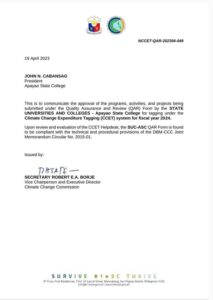 Certification of Compliance in DBM-CCC Joint Memorandum Circular No. 2015-01
Certification of Compliance in DBM-CCC Joint Memorandum Circular No. 2015-01